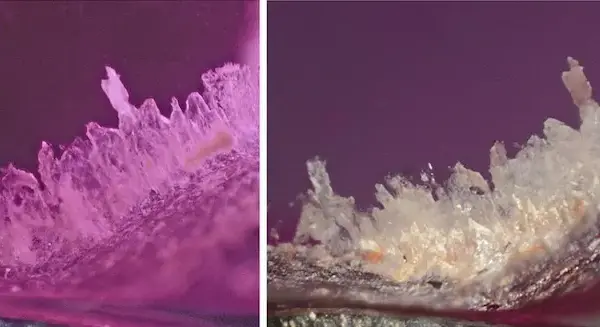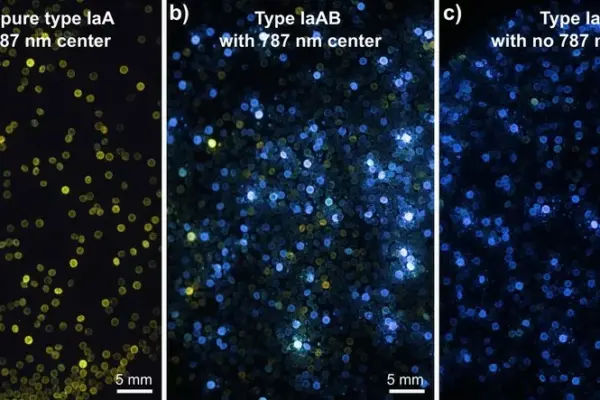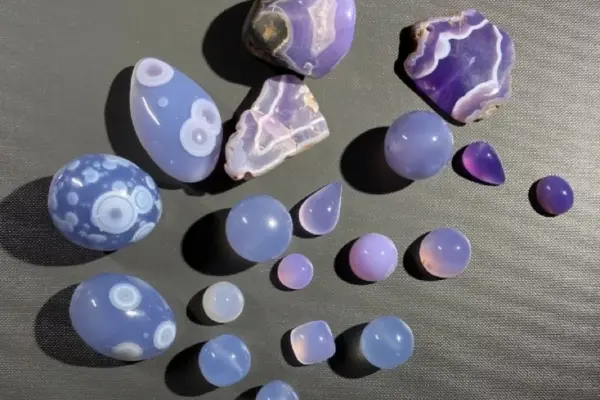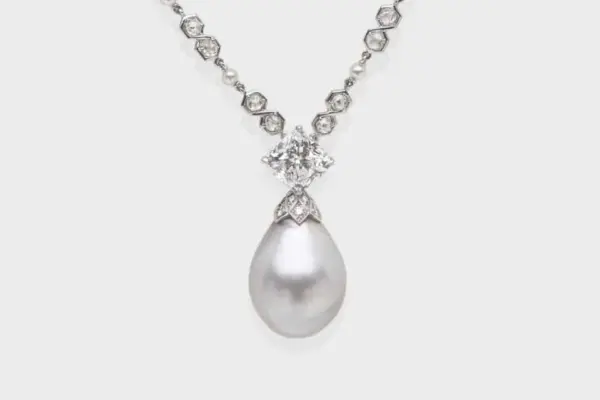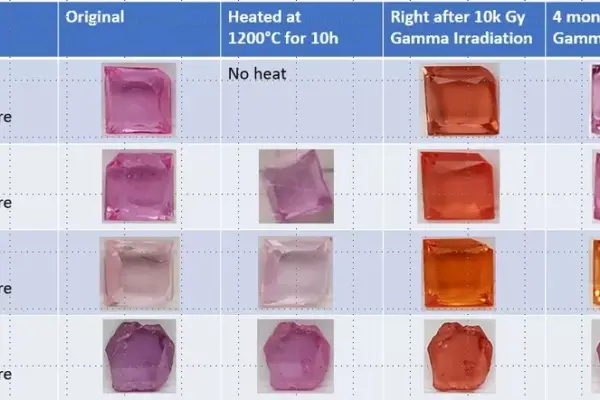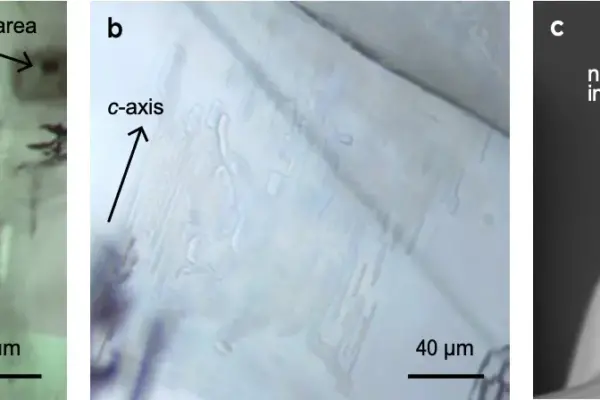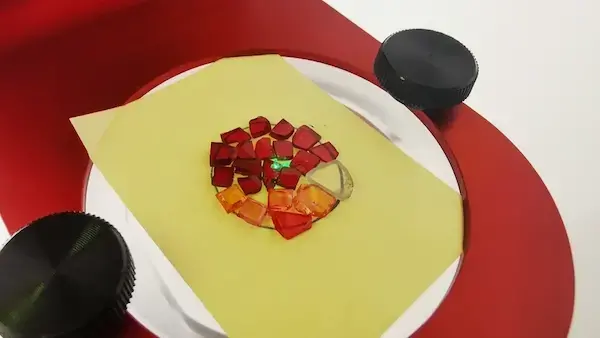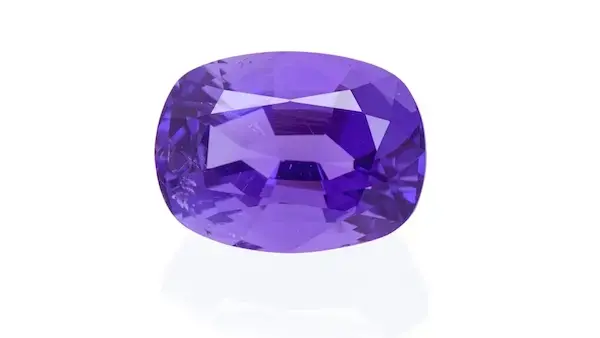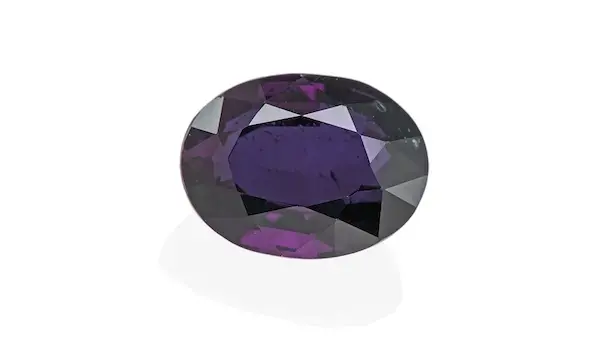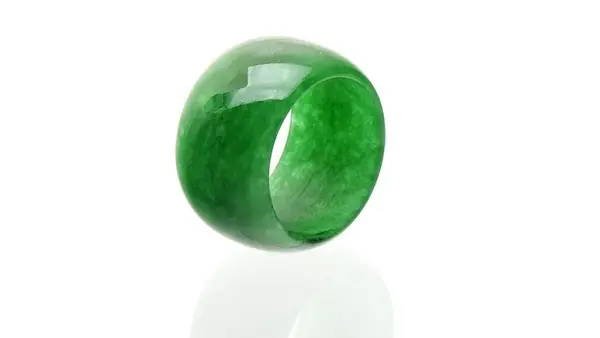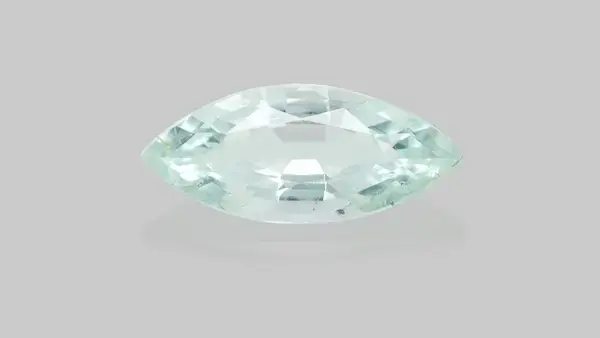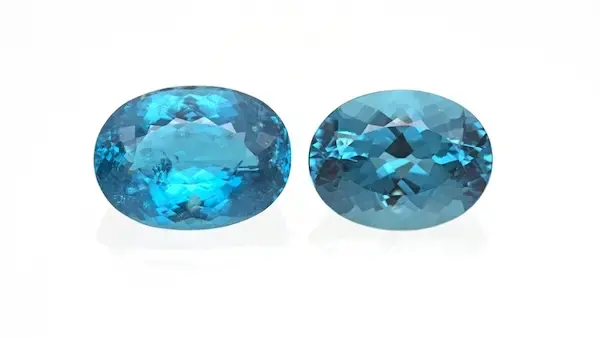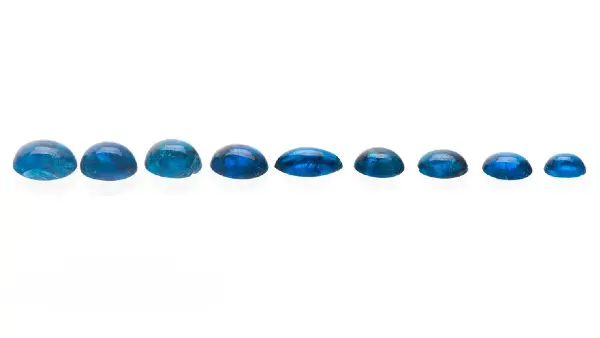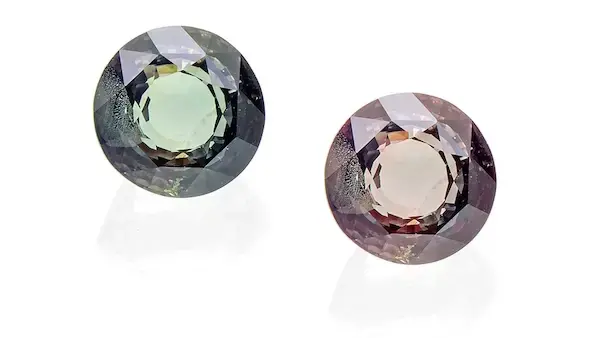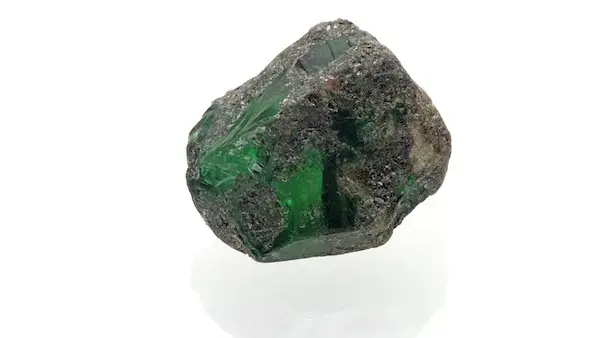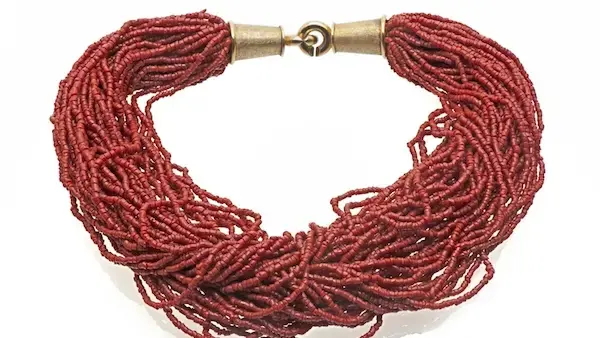Want to learn more about our history and research vision at SSEF? Click here
Erkunden Sie
unsere Research Library
Dehydration of Diaspore and Goethite during Low-Temperature Heating as Criterion to Separate Unheated from Heated Rubies and Sapphires
Dehydration of Diaspore and Goethite during Low-Temperature Heating as Criterion to Separate Unheated from Heated Rubies and Sapphires. Minerals 2023, 13, 1557.
A study of nickel-bearing type Ia diamonds
A study of nickel-bearing type Ia diamonds. IGC 2023 Proceedings, 37-39.
Phase transformations as important markers for heat treatment detection in corundum and other gemstones
Phase transformations as important markers for heat treatment detection in corundum and other gemstones. IGC 2023 Proceedings, 111-113.
Purple to bluish grey chalcedony from Ethiopia
In the past 15 years, Ethiopia has repeatedly gained attention for a variety of new gem finds. In 2008, a large deposit of white play-of-colour opal was found (Rondeau et al., 2010), followed by black
DNA Fingerprinting and age dating of historic natural pearls: a combined approach
DNA Fingerprinting and age dating of historic natural pearls: a combined approach. IGC 2023 Proceedings, 157-158.
Effects of Gamma Irradiation on Ruby and Pink Sapphire and Potential Detection Methods in Gem Labs
Keywords: Ruby, Pink sapphire, Gamma irradiation, UV-VIS, Raman, R-Line
Further Characterisation of Native Copper Inclusions in Cu-Bearing Tourmaline
Further Characterisation of Native Copper Inclusions in Cu-Bearing Tourmaline. The Journal of Gemmology, 38(5), 427-429.
Led light boxes for standardized lighting of coloured stones and diamonds
In the past, coloured gemstones and diamonds were often examined in natural daylight, but reproducing such specific lighting conditions was challenging. Some impractical methods had been suggested, li
At the frontier of research: irradiation experiments on corundum
As is known in the gem trade, the colour of certain gems may be caused or influenced by the presence of colour centres (a type of defect in the crystal structure that can absorb light and thus result
Purple love
It is always a pleasure for our team to analyse gemstones which are not so common, or sometimes even very rare, but which may compete in beauty and quality (but often not in hardness) with the most pr
Dark purple chrysoberyl
Since about three years, we see at SSEF occasionally chrysoberyl samples of very dark purplish to purplish brown colour, sometimes of quite impressive size (>10 ct). Based on chemical composition, the
Jadeite: impregnated and dyed
Jadeite-jade of saturated emerald green colour is highly valued in Asia. It is therefore not astonishing to see in the market either heavily treated jadeite-jade or even imitations made of different m
Saturation too low for Paraiba tourmaline
Copper-bearing tourmaline, also known as Paraiba tourmaline in the trade, may come in a range of colours from blue to green. Similarly, the colour saturation of such copper-bearing tourmalines may var
A perfect match: Paraiba tourmaline and Indicolite tourmaline
A few months ago, a client submitted to SSEF two tourmalines of attractive and matching shape, size and colour, both supposedly being Paraiba tourmalines (Figure 1). Chemical analyses and absorption s
Blue surprise: apatite and not Paraiba tourmaline
Last summer, the SSEF received a series of nine small blue cabochons ranging in weight from 0.4 to 1.5 ct. The client assumed that these stones were Paraiba tourmalines from a very early production of
An interesting chrysoberyl-alexandrite combination
The mineral chrysoberyl BeAl2O4 is an attractive gemstone that shows a wide variation of colours mostly ranging from yellow to green and brownish green to dark brown. These colours are mainly due to t
Dyed quartz imitating emerald
From time to time, we receive some oddities for testing, such as the rough “emerald”, reportedly originating from Africa and submitted by a client for testing. Already a quick visual examination m
Happy hour with soda and lime: glass imitating coral
Recently, a necklace was submitted to SSEF for coral testing. Already a first microscopic inspection revealed that this item in fact consisted of numerous tiny glass beads, visually imitating coral ve
